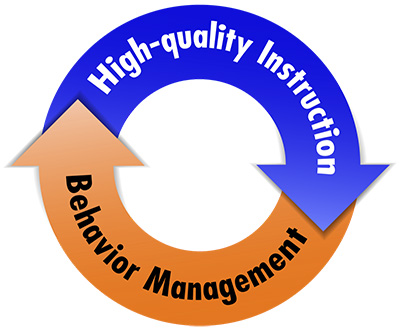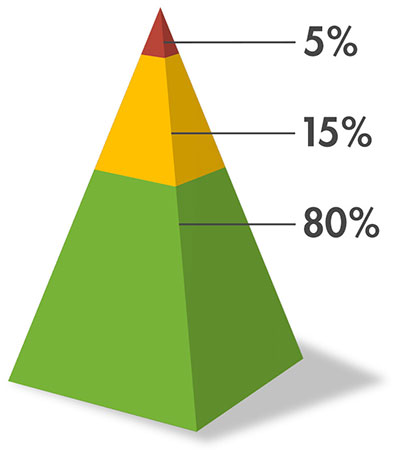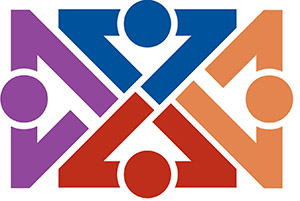What should teachers understand about effective classroom behavior management?
Page 2: Classroom and School-Wide Behavior Management
 As you just learned, disruptive behavior can have a negative impact on students and teachers alike. Although many teachers are prepared to implement evidence-based instructional practices, they often do not receive the training or develop the skills necessary to effectively manage disruptive behaviors. Additionally, planning thoughtful and engaging lessons is often front-and-center, making behavior management something of an afterthought. Regardless, teachers should understand that academics and behavior are interlinked: When teachers provide high-quality instruction, students tend to be more engaged in the lesson, and exhibit fewer disruptive behaviors; when teachers effectively manage student behavior, they have more time to provide high-quality instruction. For this reason, it’s important to see classroom behavior management as a core component of effective instruction. Read on to learn more about effective classroom behavior management and how it aligns with the broader school-wide behavior management system.
As you just learned, disruptive behavior can have a negative impact on students and teachers alike. Although many teachers are prepared to implement evidence-based instructional practices, they often do not receive the training or develop the skills necessary to effectively manage disruptive behaviors. Additionally, planning thoughtful and engaging lessons is often front-and-center, making behavior management something of an afterthought. Regardless, teachers should understand that academics and behavior are interlinked: When teachers provide high-quality instruction, students tend to be more engaged in the lesson, and exhibit fewer disruptive behaviors; when teachers effectively manage student behavior, they have more time to provide high-quality instruction. For this reason, it’s important to see classroom behavior management as a core component of effective instruction. Read on to learn more about effective classroom behavior management and how it aligns with the broader school-wide behavior management system.
Comprehensive Classroom Behavior Management
Did You Know?
Many teachers turn to colleagues for advice on how to manage student behavior. But beware! Not all advice is equally valid. Some suggested strategies are likely to be unsubstantiated whereas others have a proven track record (i.e., evidence-based practices).
evidence-based practice (EBP)
glossary
When we think of classroom behavior management, the first things that typically come to mind are rules and procedures. Yet comprehensive classroom behavior management consists of so much more. It refers to a proactive, positive system in which the teacher:
- Creates an organized, consistent, culturally-responsive, and integrated classroom environment that supports effective instruction and promotes student learning
- Engages and communicates with students (and families) in an ongoing manner
When we say proactive, we simply mean that it is better to plan to prevent disruptive behavior before it occurs rather than impulsively react to disruptive behavior after it occurs. Many behavioral challenges can be minimized, or even avoided altogether, if a teacher implements comprehensive classroom behavior management. To create such a system, teachers need to have an understanding of key concepts related to behavior and of foundational behavior management practices. These concepts and practices, listed in the table below, will be explored on subsequent pages.
| Key Concepts |
|
| Behavior Management Practices |
|
Note: Although this module covers the items in the table above, it is beyond the scope of this resource to cover every evidence-based classroom management practice.
Research Shows
- Effective classroom management, consisting of practices such as creating a structured environment, a positive climate, and clear expectations, has a positive impact on students’ academic achievement.
(Conroy, Alter, & Sutherland, 2014; Gage, Scott, Hirn, & MacSuga-Gage, 2018; Stronge, Ward, & Grant, 2011) - Teachers and school administrators play a critical role in setting clear expectations for acceptable behavior. They are also instrumental in developing positive, culturally responsive, and respectful management systems that facilitate learning and social development.
(Larson, Pas, Bradshaw, Rosenberg, & Day-Vines, 2018; Scheuermann & Hall, 2016) - Effective classroom managers recognize that teacher behavior influences student behavior. As such, they invest time in the logistics of how best to prevent and respond to instances of disruptive behavior.
(Mitchell, Hirn, & Lewis, 2017; Simonsen et al., 2015)
Listen as Angela Mangum and Ashley Lloyd discuss the benefits of implementing comprehensive behavior management.
Transcript: Angela Mangum
I’m about to start my twelfth year of teaching. The benefits that I’ve seen of implementing classroom management systems for behavior, it’s that it really creates a calmer classroom. I think when you’ve got a system that you’re comfortable with—and it might not be the system that your next-door neighbor has or that your across-the-hall neighbor, because what’s authentic for you might look different for somebody else—but I think once you have your system and you stick with it (and that consistency is key) you’re going to see just a calmer classroom. It feels comfortable because you’re comfortable with what you’re going to do, no matter what comes up.
Having a comprehensive classroom management system impacts everything. It makes teacher stress lower, because when you’re dealing with kids and teenagers or even really young ones, they’re unpredictable. And you’ve got 20 personalities in a classroom, and every day is different. And that’s why teaching is awesome. But having a system like that creates a low-stress environment because you know what you’re going to do in the situation. And then it also really creates a low-stress environment for the students. They walk into your classroom knowing what’s going to happen. It’s not this unpredictable environment. They feel calm in the comfort of knowing what’s going to happen. And if they do this, they understand there’s going to be a consequence, and they know the boundaries that you’ve set. And it just allows for the focus to be on the learning and not on putting fires out all day, every day.
Transcript: Ashley Lloyd
Some benefits of implementing comprehensive behavior management is that when my students and I all know what is expected during any given time, there’s a sense of calm. It fosters independence in the children, and dealing with unwanted or inappropriate behaviors is much more simple. If structures aren’t in place and expectations aren’t clear, students tend to test boundaries and often have to stop the flow and reassess and start over; whereas if I’m sure that everyone understands expectations and we are clear with their rules, that children are able to flourish.
When I have a strong comprehensive behavior management system, students are able to follow clear expectations and know the structures of the classroom, and they tend to flow right into working behavior. So when engaged in meaningful working behavior, they tend to not have unwanted behaviors. Even if unwanted behavior does come up, it’s easy to handle since the rest of the students can be independent in their working time.
Although this module will focus on establishing comprehensive classroom behavior management, some educators may wonder: Do I need to consider comprehensive classroom behavior management if my school is already implementing school-wide behavior management?
School-Wide Behavior Management
Thousands of elementary, middle, and high schools across the nation have adopted school-wide behavior management, so it is likely that your school is implementing such a system as well. If so, you should still implement comprehensive classroom behavior management. When properly aligned, these systems work together to support the academic and behavioral success of all students.
Schools that implement school-wide behavior management commonly use Positive Behavioral Interventions and Supports (PBIS). The PBIS framework provides the structure (broad practices and core principles) around which educators can identify and use evidence-based practices for improving academic and behavioral outcomes for all students. PBIS consists of three tiers—Tier 1, Tier 2, and Tier 3—through which educators can provide a continuum of supports and services to promote appropriate behaviors and to prevent and address challenging behaviors.
Positive Behavioral Interventions and Supports (PBIS)
glossary
|
Tier 1 (sometimes referred to as primary or universal prevention) is effective school-wide or classroom behavior management, which includes teaching students appropriate behavior. |
|
Tier 2 (also referred to as targeted or secondary prevention) offers targeted supports to groups of students with similar needs. |
|
Tier 3 (also referred to as tertiary intervention or intensive, individualized prevention) offers an individualized support plan based on assessment data. |

Both school-wide and classroom behavior management are considered primary prevention (Tier 1). If implemented effectively, comprehensive classroom behavior management should prevent or address the challenging behavior of approximately 80% of students.
When thinking about comprehensive classroom behavior management, teachers should make sure it aligns with the school-wide behavior management plan. For illustrative purposes, let’s see how Ms. Rollison’s school implements Tier 1 prevention in its school-wide behavior management plan.
Note: This example only includes one key practice in Tier 1 and is not all-inclusive of a school-wide behavior management plan. It intends to show how a teacher can align her own classroom expectations with the school-wide expectations.
For Your Information
In addition to identifying school-wide expectations, some schools establish rules and consequences to be used in all classrooms. On the other hand, others plan only the school-wide expectations and allow teachers to create their own classroom rules and consequences. Be sure to check with your school’s leadership team to determine your responsibilities as a teacher.
School-Wide: One of the key practices of Tier 1 is to define and teach school-wide expectations. The PBIS framework recommends that schools identify three to five positively stated behavioral expectations that apply to all students.
Example: The leadership team at Ms. Rollison’s school has chosen three expectations: Be Respectful; Be Responsible; Be Ready.
Classroom: The PBIS framework notes that teachers should align their classroom expectations with the school-wide expectations. This consistency helps students understand what to expect and, therefore, limits disruptive behaviors.
Example: Ms. Rollison discusses the school-wide expectations with her students and explains what this looks like in her classroom. Examples of each are noted in the table below.
| School-Wide Expectations | Ms. Rollison’s Classroom Expectations |
|
Be Respectful |
|
|
Be Responsible |
|
|
Be Ready |
|
Listen as Ashley Lloyd explains how her comprehensive classroom behavior management aligns with the school-wide behavior management system.

Transcript: Ashley Lloyd
My personal comprehensive classroom behavior management system aligns well with our school-wide behavior management system. Basically the way that I have made this work is that in my classroom I manage behaviors using clear expectations, routines, and structures. I focus on making learning fun and meaningful, and it allows for natural consequences of missing out on fun classroom experiences if unwanted behaviors arise. Our school-wide system focuses on four expectations of being respectful, responsible, ready, and safe in all areas of learning. So easily I’m able to tie that exact language into my personal expectations and structures so that the children are able to have a cohesive system throughout the building and in my room.
In our building, the way it works is we have the PBS matrix, so we take respectful, responsible, ready, and safe in the cafeteria, in the bathroom, in the hallway. I say what it’s like to be respectful, responsible, ready, and safe in my classroom. I also break it down a little bit more specifically to how are you respectful, responsible, ready, and safe as you enter the classroom. How are you respectful, responsible, ready, and safe during a whole-group activity versus how are you respectful, responsible, ready, and safe during an independent task? So I do use that language within my classroom.
Ms. Rollison — The Story Unfolds
 Now that Ms. Rollison is aware that many behavioral challenges can be minimized or avoided altogether by implementing comprehensive classroom behavior management, she is beginning to feel more confident. She is now ready to explore key behavioral concepts and practices that will help support her students both academically and behaviorally.
Now that Ms. Rollison is aware that many behavioral challenges can be minimized or avoided altogether by implementing comprehensive classroom behavior management, she is beginning to feel more confident. She is now ready to explore key behavioral concepts and practices that will help support her students both academically and behaviorally.
High-Leverage Practices for Students with Disabilities
 The practices highlighted in this module align with high-leverage practices (HLPs) in special education—foundational practices shown to improve outcomes for students with disabilities. More specifically, these practices align with:
The practices highlighted in this module align with high-leverage practices (HLPs) in special education—foundational practices shown to improve outcomes for students with disabilities. More specifically, these practices align with:
HLP7: Establish a consistent, organized, and respectful learning environment.
HLP9: Teach social behaviors.
HLPs, which all special education teachers should implement, are divided into four areas: collaboration, assessment, social/emotional/behavioral practices, and instruction. For more information about HLPs, visit High-Leverage Practices in Special Education.
